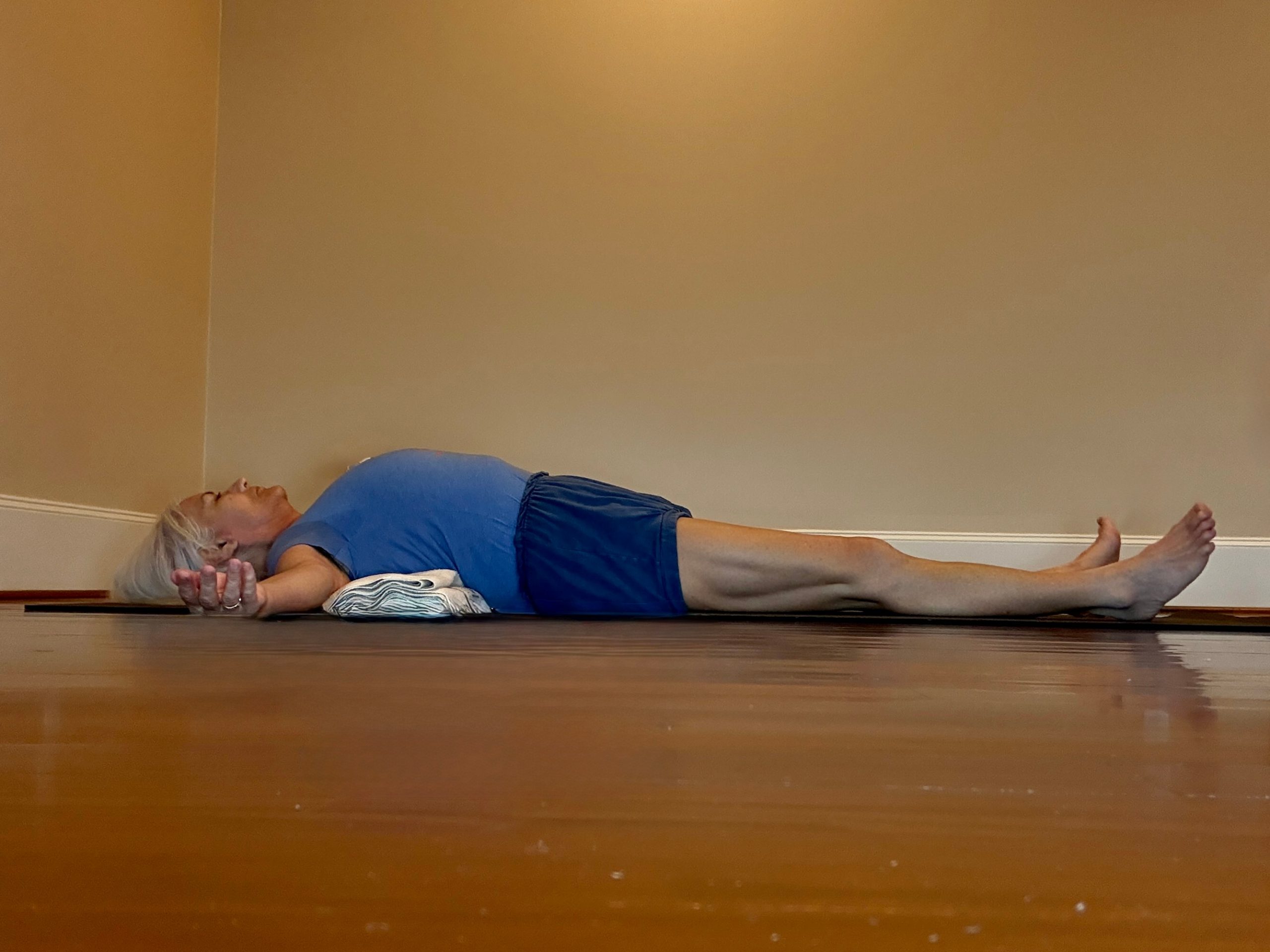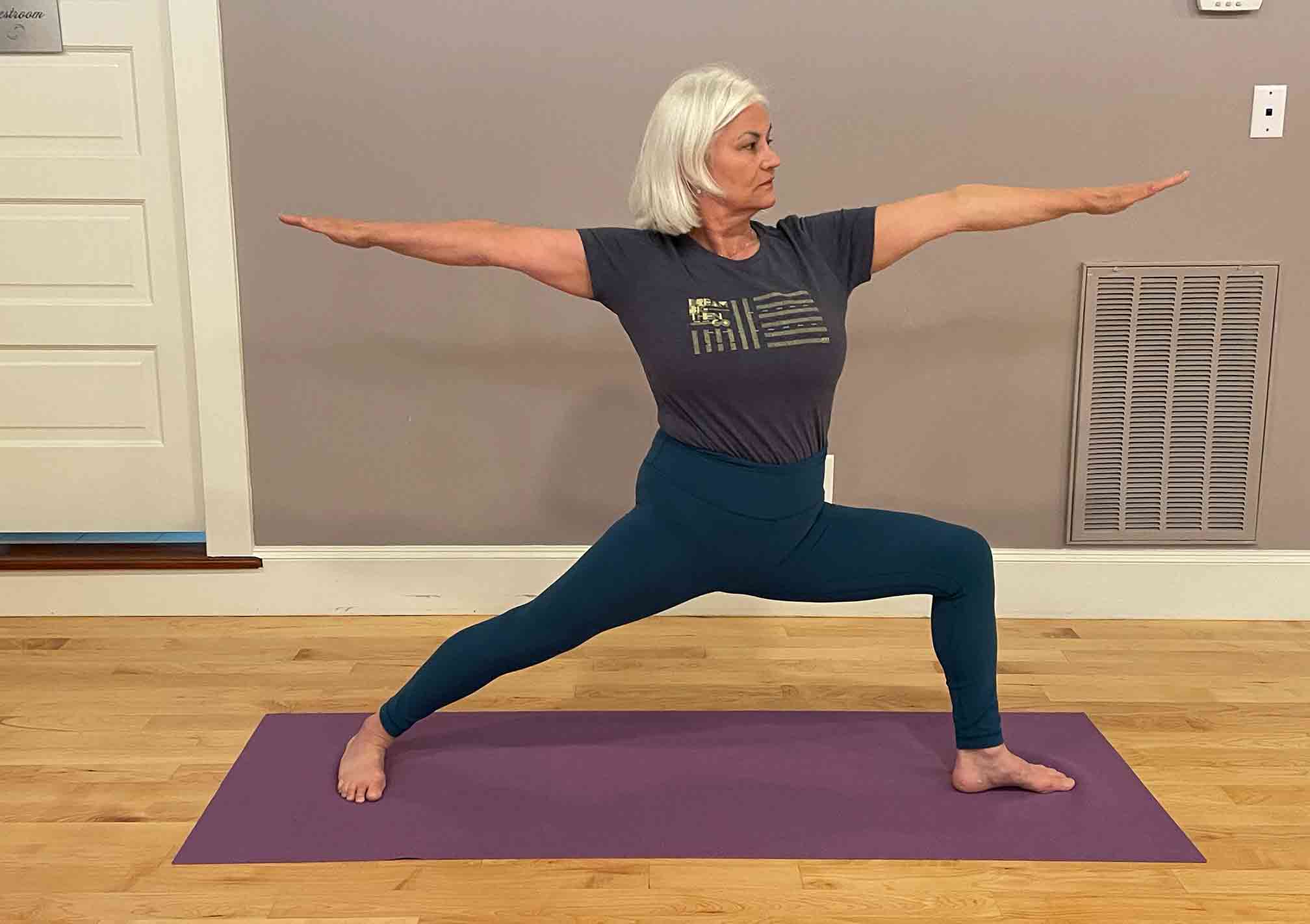
Pauline Schloesser, Ph.D., Certified Iyengar Yoga Teacher, IAYT Yoga Therapist
You may be wondering, what good is a prāṇāyāma practice? How will it help me? If you are interested only in fitness or calorie burning, it won’t. But I’m assuming if you’re interested in yoga, you are going for deeper effects that transform mind as well as body.
You would engage in prāṇāyāma for the same reasons that you might be interested in meditation. You want to calm the mind. You are searching for inner peace, a way to stop the chatter inside the head that keeps you awake, agitates you, or destroys your concentration.
Actually, meditation does not begin without prāṇāyāma. The Sanskrit word for meditation is dhyāna, and its origin is the eight-fold path of yoga: yama, niyama, āsana, prāṇāyāma, dhārana, dhyāna, and samādhi. And, as you can see, prāṇāyāma follows āsana in this list.
Prāṇāyāma begins after an āsana reaches perfection. When an āsana has become steady and comfortable such that a feeling of infinity within is reached, this is when we can start working toward prāṇāyāma.
Prāṇāyāma uses the breath as a tool to access vital energy. One of Prashant Iyengar’s favorite metaphors for working on the breath is blacksmithing. Like a blacksmith puts metal on the anvil to hammer away at it, we put the breath on the anvil for shaping. The breath must become the focus, the obsession, the main consideration. We must become breath-aware, breath-considerate, breath-obsessed, with the same kind of focus the blacksmith would have on his metal object.
Prāṇāyāma means regulation, control, or expansion of life force. It employs the breath as a tool, and it is the run-up to meditation.
An anvil is a master instrument for making tools. Anvils can be made of cast iron but the best ones are made of steel. A piece of steel railroad can make a poor-man’s anvil. It’s basically a hard and stable base on which one hammers metal to forge a tool or instrument. Hammer heads are made with anvils and then used as a tool to shape other metal tools on the anvil. Similarly the body must be made stable in an āsana before the shaping of the breath begins.
The anvil is a workspace. It’s a man-made object that helps humans shape elemental nature. The anvil is all about the human / tool creativity connection. Nowadays we have metal fabricating machines, but originally, metal fabrication had to be done with human labor. As an instrument that anvil will not work without mental concentration, physical action, and a specific use of the breath.
Once seated or supine in a stable posture, we do some clearing exercises, and then “put the breath on the anvil.” We make the breath a project. We choose a region of the body on which to focus, we observe the flow, volume, and texture of the breath, and then start shaping it. In this process, we decide whether to work primarily on inhalation or primarily on exhalation. The breath then becomes the material to be shaped, formed, controlled, expanded, stretched, like the raw metal on the anvil.
Working on the breath is not in itself prāṇāyāma. Putting the breath on the anvil in a stable position is called Śvāsayāma, and it is a necessary precursor to prāṇāyāma.
Another element is required and that is silent speech. After some time of concentrated work on the breath, sound forms are introduced. These can be mantras, ślokas (verses from hymns), vowel sounds, or single syllables. They are uttered silently with the mind and they create perceptible and imperceptible effects on body and mind. Thousands of energy centers all over the body, called nadīs, reverberate to these sound forms.
Prāṇāyāma does not begin until body, breath, and mind are all unified in the awareness of silent speech working on these energy centers. In general, sound forms are not introduced until students are well acquainted with Śvāsayāma. You have to walk before you run, and crawl before you walk. Similarly, you must learn Śvāsayāma before Prāṇāyāma, and āsana before prāṇāyāma.
All this practice leads to a big payoff. While the practice of yoga postures makes you strong, limber, and fit, the practice of prāṇāyāma will actually help you change your deep-seated habits. This is because through prāṇāyāma, you start with the breath but then you reach the mind. You learn how to quickly go into a witnessing state, which means you can control your reactions to external and internal stimuli. In the beginning you’ll notice that you get a break from obsessive worrying. Body tissues are rejuvenated and the mind feels clear. With years of practice, old habits change and we mature in wisdom.
In a beginners’ pranayama series, like the one we are offering this Fall, students are introduced to supine asanas and breath awareness. Once this is understood and developed, we help students manage and shape the breath. Once this is established, seated asanas are introduced, and then breath work is added.





